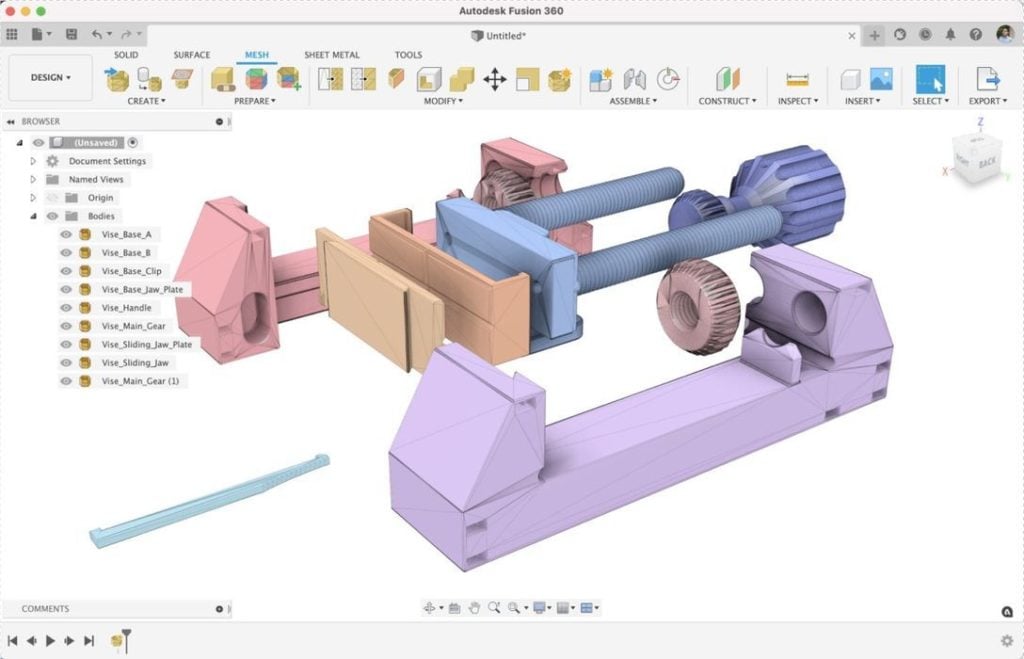
Autodesk’s latest version of Fusion 360 includes significant changes to their mesh processing functionality.
The increasingly popular 3D creation tool has long provided a way to create 3D objects for 3D printing and other making technologies including CNC milling and sheet metal fabrication.
Fusion 360 has for quite a while included basic mesh functionality, but as more of a sideshow than the main creation technique.
Typically objects in Fusion 360 are created using CAD tools, where basic 2D and 3D shapes are assembled and modified into the desired shapes. Only then would the 3D geometry be converted into a mesh for export and use in, say, a 3D print slicing system.
But over time Autodesk has gradually been increasing the capability of mesh operations in Fusion 360. This has been provided to users in the form of “Preview” to now a “persistent tab within the Design workspace.” In other words, it’s moved from “beta” to “production”.
Along the way they’ve improved mesh handling overall. They explain:
“We’ve completely overhauled the toolset, improved the performance of how you edit mesh bodies, and added a few new tools to increase flexibility. Working with mesh bodies in Fusion 360 has never been better, and it’s now available to everyone.”
This is terrific news, because mesh and CAD objects have traditionally been quite separate. While you absolutely need mesh versions of an object to perform 3D print slicing, the design is done in CAD. This means exporting to a mesh format, and the two worlds were separate.
The problems result when there’s issues with the mesh and it gets tweaked — separately from the CAD version. Then you suddenly have two versions of the same object, and that can lead to problems and unexpected results if you’re not paying attention.
Autodesk describes the new functionality as “seamless interaction between solid & mesh”, but it’s not total unification, obviously. What they mean is that you can now include a mesh body within a CAD design, something that could never have been done before. This means you could, for example, add an imported STL file onto a CAD design you’ve been developing.
The new version of Fusion 360 now holds a history timeline for activities on a mesh body. Previously there was no timeline, making it risky to perform a sequence of changes on a mesh: they could not be undone easily.
Autodesk has also made available a number of action operations for meshes, including scale, plane cut and combine. There’s also an ability to repair broken meshes — an all-too frequent occurrence, unfortunately — using built-in Netfabb tech.
Finally, you can export models in not only in STL format, but also the newer and increasingly popular 3MF format.
All of this means Autodesk Fusion 360 users will certainly have a much easier time manipulating and inserting mesh files into complex designs.
Via Autodesk
